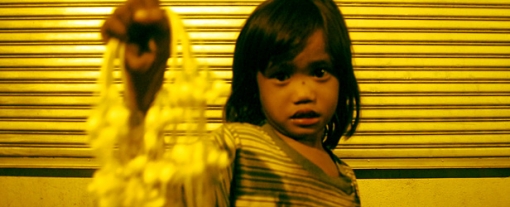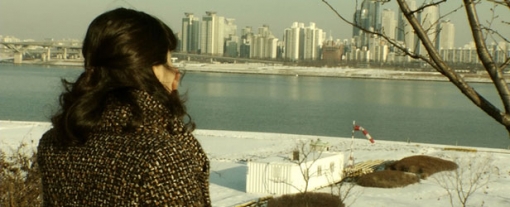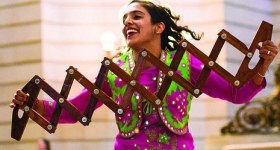Eyad Zahra's The Taqwacores
SFIAAFF 29 is here, which means for ten days in San Francisco, the East Bay, and San Jose, Asian Americans flood local theaters to see a fresh crop of APIA and Asian cinema and make the general moviegoing public ask, "Why are there so many Asians here? Is the Hangover 2 out already?"
I kid! It's what you do once a good friend starts nearing 30.
To celebrate the glory that is SFIAAFF -- which kicks off this Thursday March 10 with the screening of West is West and the swanky Opening Night gala at the Asian Art Museum -- Hyphen will be supplying you with reviews of select films screening at the fest this year. No star ratings, tomato percentages or positioning of thumbs here, though: we'd like you to buy tickets, venture out of the house, and support your Asian American film community.
We begin this week's reviews with a look at the multifaceted Muslim American experience, the lives of young flower vendors in the streets of the Philippines, and one woman's move from north to south on the Korean peninsula.
The Taqwacores
Dir: Eyad Zahra
Eyad Zahra's narrative feature The Taqwacores, based on the novel of the same name by Michael Muhammad Knight, is your typical coming of age story.
If you happen to be coming of age in a Muslim American punk commune in Buffalo, NY.
Don't even try to stop me, I know you haven't heard this one before.
The film follows Yusef (Bobby Naderi), a baby-faced, straight-laced Pakistani American engineering student who moves into a house presumably filled with other polite, devout Muslims. He learns quickly that his housemates are radically different from himself and each other. Umar is the aggro Muslim, a straight edge, dogmatic hard ass who criticizes any deviations from the faith according to his own stringent interpretation (including tea drinking, weed smoking, and homosexuality); Rabeya (Noureen DeWulf), the sexually outspoken female roommate clad in a head to toe burqa; Ayyub, the shirtless prankster with some hygiene issues; Fasiq, an Indonesian pothead who insists marijuana is not forbidden in the Koran; and Jehangir (Dominic Rains), the mohawked house leader who decides to bring the Taqwacore west coast Muslim punk scene to Buffalo for one legendary rager.
Though we follow Yusef in his fish-out-of-water adjustment to different interpretations of Islam, the heart of the film belongs to Jehangir, played magnificently by Rains. A truly captivating presence on screen, Rains is able to make dialogue about the vastness of Allah and Islam and the significance of those who are marginalized within the faith because they are "unorthodox" really hit you in the gut, lines that in the hands of less apt actors would sound like platitudes.
Zahra and Knight, who co-wrote the script together, carefully straddle that line between political commentary and fictional narrative, including sound bites of Rush Limbaugh and other anti-Muslim pundits and weaving in race, sexuality, gender roles, and politics into the household conversation and debates without becoming heavy handed in its message that Islam isn't what you think it is; it's so much more. The director captures that sentiment perfectly in the briefest of shots, quick cuts between the housemates putting away strikingly different sets of shoes before beginning prayer. Zahra does grit and bombast well, but his subtlety (particularly with the film's stellar final shot) is worth screaming about.

Sampaguita, National Flower
Dir: Francis Xavier Pasion
In his second feature film following Jay, director and writer Francis Xavier Pasion takes you to the streets of the Philippines in the eyes of the children who walk and live on it. The film’s title tells you alone that it is about the Philippine national flower -- the sampaguita -- but here it becomes the means of living for the children who sell it daily on the streets.
The viewer follows the short 24 hour life cycle of the sampaguita as it is harvested in the province of Pampanga and then shipped to the vendors to sell in Quiapo and Tomas Morato, both areas that are known for cheap goods and marketplaces. But the flower isn’t the focus here; instead, it is the children who sell them. There is Ronalyn who escapes her abusive mother and Reynalyn who would rather go to an orphanage than to live with her mother for the same reason. There is Marlon who wants to celebrate his birthday with cake but even a street kid like him has a moral compass to steer him away from wrong. And of course there are countless others who the share the streets with them but all want to be more than sampaguita vendors.
All of the children are non-professional actors as well as actual sampaguita harvestors and vendors. It is through their real individual interviews that Pasion uses throughout the film that you come to know these children, their struggles, and ultimately their ambitions in life. Pasion takes the viewer on a sincere walk in these children shoes and hearts and allows the sights and sounds of the Philippine streets to come alive through the great cinematography of Neil Daza. The only thing that the viewer is left wanting is the wish to experience the fragrant smell of the sampaguita that fill the air everyday because of these children.
--JJ Casas

Dance Town
Dir: Jeon Kyu-hwan
Dance Town, a feature film by South Korean director Jeon Kyu-hwan, tells the somber story of a North Korean woman, Rhee Jung Nim, who defects to the south. The film is slow-paced, a counterpoint to many of the types of pop culture and films typically exported from South Korea into the United States. It tells a story less often told: of women, of the disabled, the elderly, and of refugees like Rhee.
Rhee leaves her loving husband behind and illegally crosses into South Korea, hoping to reunite with him in the future. The South Korean government provides her with an apartment and a small stipend to live on. Here, she rubs shoulders with peripheral characters, the less-fortunate in South Korean society: dissatisfied government workers unable to afford living expenses, an unhappy school girl attempting a pill-induced abortion, and her one friend, a disabled man who feels neglected and unsupported by the government.
At one happier point in the film, the man asks her whether she's happy in the south. Rhee wonders if everyone is the same everywhere, and perhaps she is more content in the North with her husband. They continue to discuss the difference between North and South Korean kimchi. Rhee says, "It's the same. We are one people, how could it be different?"
The film's silent and slow scenes are characteristic of Asian cinema, full of subtle symbolism, but this film tends to overdo the technique. Rhee's endless walks through the snowy Korean streetscapes are just one example of how excruciatingly slow and empty the film is, in spite of its noble intentions.
It is a long story that could be told better in fewer words. The feature length film drags on without relief, only punctuated by shocking moments involving an unpleasant loss or exchange of bodily fluids.
The loneliness and isolation the film emphasizes becomes heavy and unpleasant, and the film lacks charm and does not attempt to entertain. It is difficult to relate to any of the characters; the viewer can only observe Rhee's pain and depression with little feeling -- or perhaps what all of these characters ultimately experience: emptiness.
--Jessica Lum










Comments